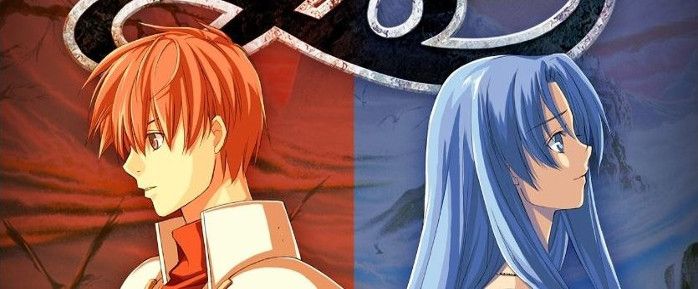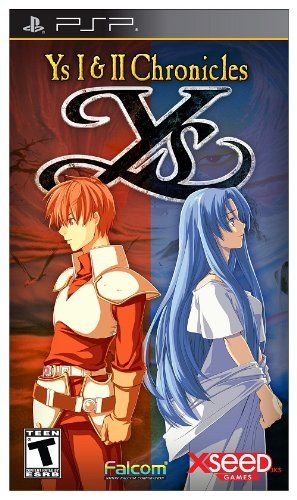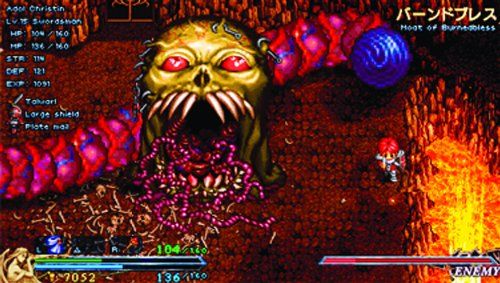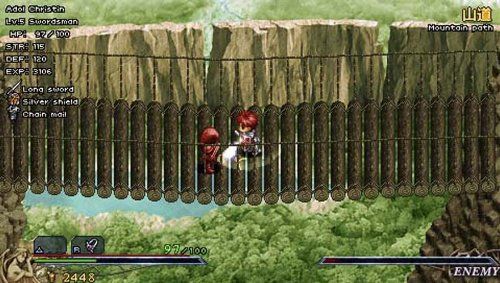Handheld gaming is more than a compromise of power and portability. Whether it’s the ability to play anywhere, multitask or hold an entire console in your hands, it’s a special experience consoles have never replicated. In a world where high resolutions and teraflops reign supreme, we take a look at a portable relic every month and reflect on what makes it memorable.
Ys is a long-running action RPG series that has endured several decades of having a respectable fanbase, but never quite made it becoming a household name. But as the fans know, Ys has consistently put out quality entries throughout its existence across many different console generations. The first two entries in the series, Ys I: Ancient Ys Vanished and Ys II: Ancient Ys Vanished - The Final Chapter have been reissued numerous times with some variations on the title. The two are usually packaged together, as Ys I primarily serves as an introduction to Ys II. Like any game released in the second half of the '80s, even with the updates and facelift, their core mechanics and design reveal these titles as being antiquities but that doesn't mean they aren't worth anyone's time, especially people who were introduced to Adol Christin in the more recent Ys titles.
These first two games were released in 2011 on the PSP as Ys I & II Chronicles, which currently can be downloaded from the PlayStation Store to be played on the Vita. This is the particular version that will be referenced, though they were also released in 2009 for the Nintendo DS as Legacy of Ys: Books I & II. I wouldn't say the two versions are identical due to the differences of the Nintendo and Sony handhelds, but they are essentially the same games and if someone wasn't sure which version they should get I would recommend to just go with whichever system you prefer.
Ys I begins with Adol sailing the high seas on a small boat. People who joined Adol in his adventures in later entries already know where this is headed, as his undersized vessel sails into troubled waters during the storm, obliterating his boat and sending his battered body to the shores of Esteria. The silver lining to this disastrous voyage is he at least ended up on the shores of the land he was trying to reach. Adol is found by a citizen of the village Barbados, who under their doctor's care recovers from the wreck. This is where Adol learns of demons becoming a problem on the island after the Stormwall formed, isolating the island from the rest of the world.
Being as this is the first game in the franchise, Adol is likely unaware he has a propensity to end up in places that have some sort of demon or monster problem and he is the swordsman needed to save the day. Maybe it's just a series of coincidences or perhaps he is cursed and brings trouble with him. Perhaps Adol hires these evil forces to play the role of villain for him so he can be a hero, and he ends later betraying them by killing them so he can keep his wealth. That last theory hasn't been proven, but given the plot of each of the different Ys games it doesn't seem entirely outside of the realm of possibilities. The crooked Adol theory is most likely without merit, especially since meeting the fortune teller Sara kind of debunks when she discusses her vision of someone matching his description being tied to the current problems in Esteria and informs him of the six Books of Ys.
The gameplay of Ys I doesn't look too far removed from other top down adventure games of the time such as The Legend of Zelda, which is only partially accurate. Adol has a world to wander, dungeons to explore and monsters to kill but unlike his emerald capped contemporary he doesn't rely on button presses to wield his sword, instead he fights using a bump system where he walks into enemies to defeat them. Before this sounds like the easiest attack system ever it does have a bit of nuance to it. Walking into an enemy head on will be more detrimental to Adol than his foe, he needs to pick an angle of attack. Coming in from a diagonal works a lot better for him, though going from the front will still hurt him a little. The best approach is to go for a rear attack. Later entries have gone with more traditional attacks by pressing buttons, but the bump system does provide a rather unique combat approach and with the emphasis on rear attacks gives it a bit of a stealth element. Thankfully Adol's health bar regenerates so the player doesn't have to play through dungeons as a pacifist.
Ys II is a direct continuation of the story, taking place immediately after the events of Ys I. Adol wakes up after the final conflict of the previous game on a floating island, and learns a bit about Ys and how the island ended up floating in the first place, which is some history that is fleshed out some more later on in the prequel Ys Origins. As things tend to happen where ever Adol travels, a villager soon asks him to deliver a message to the town doctor, who is not present at his practice. It doesn't take long for a carrier pigeon to bring a message that he is trapped in a mine, which is conveniently infested with demons that only Adol can defeat. So off to the mine Adol goes, and not the last time he ends up going into a demon infested mine to help out a town either, to help out the doctor. Slightly unrelated, Adol learns that those six Books of Ys he possesses should be returned to their respective statue of a priest at the Sanctuary of Toal, which gets the ball rolling in how what begins as a simple go into a mine to help out a doctor quest snowballs into a grand adventure with greater forces of evil at play than originally imagined.
The gameplay is essentially the same as Ys I, explore many exotic places including castles, snow covered tundra and caverns with magma pools. It's really not too different from the first game except more fleshed out and better developed, basically using the let's continue the story by essentially making the same type of game except better approach which in this case was the right way to go. The combat style from the first returns, but this time Adol has a staff that can use fire magic, something that is essential for some boss fights. The combat approach is an interesting idea, but while it does provide a need to do some strategy with character movement it lacks the catharsis of mashing an attack button.
These two games were first released as a single collection in America in 1990 for TubroGrafx-CD and received near-universal critical acclaim. The Ys series never quite blew up in the states and always lived in the shadow of other RPG and adventure giants such as Final Fantasy and Zelda, but this is a series that is worth checking out for any RPG fan. The Ys games are consistent in delivering well-developed and twisting stories, even though they may be a bit trope heavy at times. More importantly, they deliver on providing enjoyable and engaging gameplay, and the soundtracks are always a strong point. Ys games are all their own unique entity, and while they may experiment with the gameplay elements from time to time such as when they made Ys III: The Adventure of Adol Wanderers From Ys a side-scrolling platformer, they have a consistent style and feel to them. People unfamiliar with the series may be more attracted to the recent Ys VIII: Lacrimosa of Dana, which is honestly a much more enjoyable game, but revisiting this title to see how the adventure began is a worthwhile pursuit.
Get more Pocket Power. Click here to view every Pocket Power so far and prepare for a pocket-sized stroll down memory lane.





